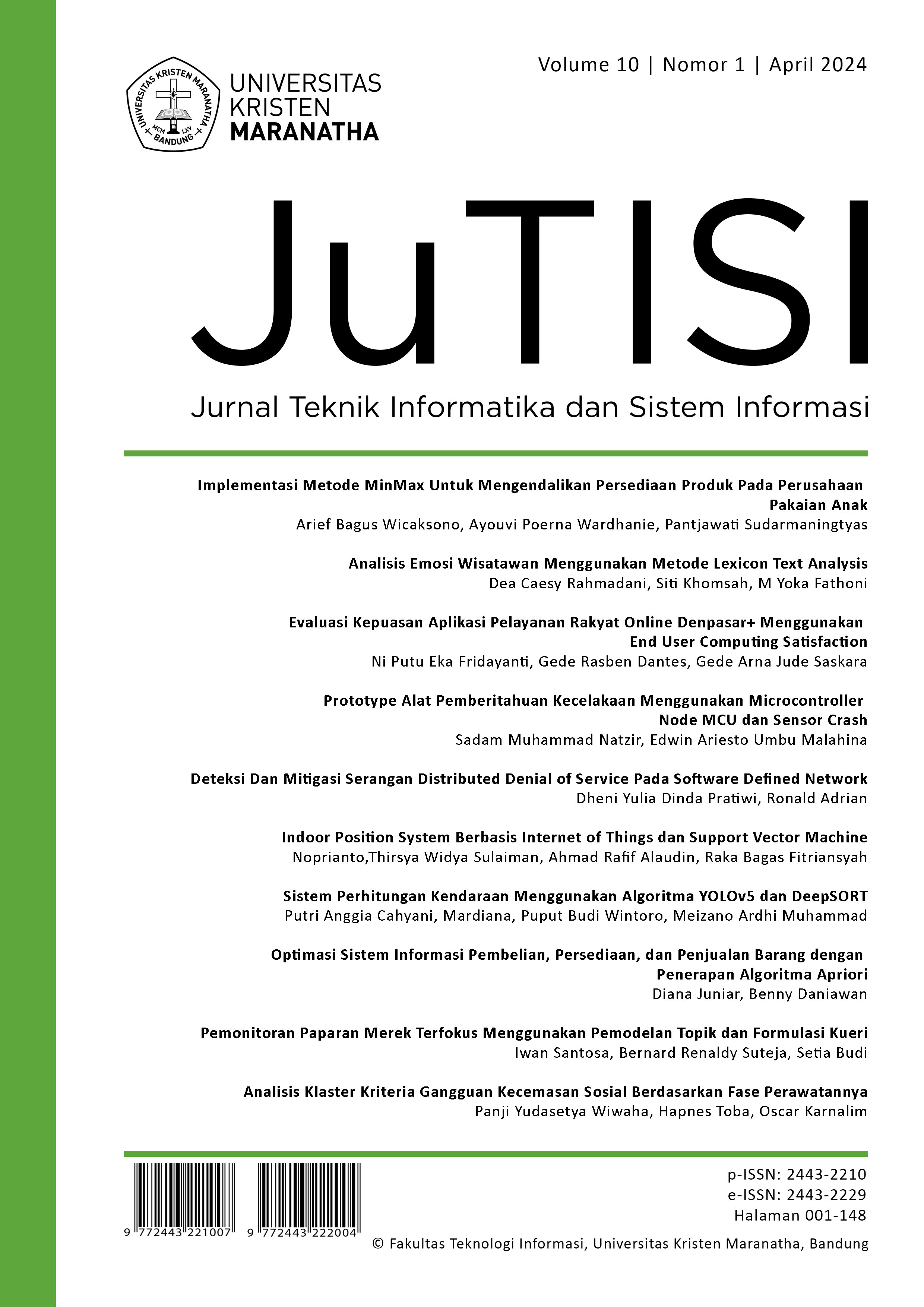Information System Optimation for Purchasing, Inventory, and Sales with Apriori Algorithm Implementation
Main Article Content
Abstract
The fashion retail business is a business sector that is continually growing and has many enthusiasts. Apart from companies with well-known fashion brands, this business is also often found in small and medium-scale enterprises, where business processes are implemented manually, starting from purchasing, inventory management, and selling goods. These three processes are essential in business because they are related. The recording is done manually, often allowing inaccurate data to occur. Problems that are often found are in calculating inventory, which can cause stock-outs or stock build-up. Apart from that, checking and updating data, as well as making reports, takes quite a long time and is less practical. Using a purchasing, inventory, and sales information system can help business owners in running their business because the system designed is integrated, and applies an a priori algorithm method that can help recommend which products are trending based on customer transactions, therefore business owners can optimize inventory management effectively by knowing the patterns of products frequently purchased by customers. The results of system testing using the Technology Acceptance Model (TAM), which was processed with the SmartPLS application on data from 37 respondents, gave results that the second hypothesis, namely Behavioral Intention to Use (BITU), has an effect on Actual System Use (ASU), the fourth hypothesis, namely Perceived Ease of Use (PEOU) has an impact on Perceived Usefulness (PU), and the fifth hypothesis, namely Perceived Usefulness (PU) has an effect on Attitude Towards Using (ATU), and other variables have no effect.
Downloads
Download data is not yet available.
Article Details
How to Cite
[1]
D. Juniar and B. Daniawan, “Information System Optimation for Purchasing, Inventory, and Sales with Apriori Algorithm Implementation”, JuTISI, vol. 10, no. 1, pp. 100 –, May 2024.
Section
Articles

This work is licensed under a Creative Commons Attribution-NonCommercial 4.0 International License.
This is an open-access article distributed under the terms of the Creative Commons Attribution-NonCommercial 4.0 International License (https://creativecommons.org/licenses/by-nc/4.0/) which permits unrestricted non-commercial used, distribution and reproduction in any medium.
This work is licensed under a Creative Commons Attribution-NonCommercial 4.0 International License.

